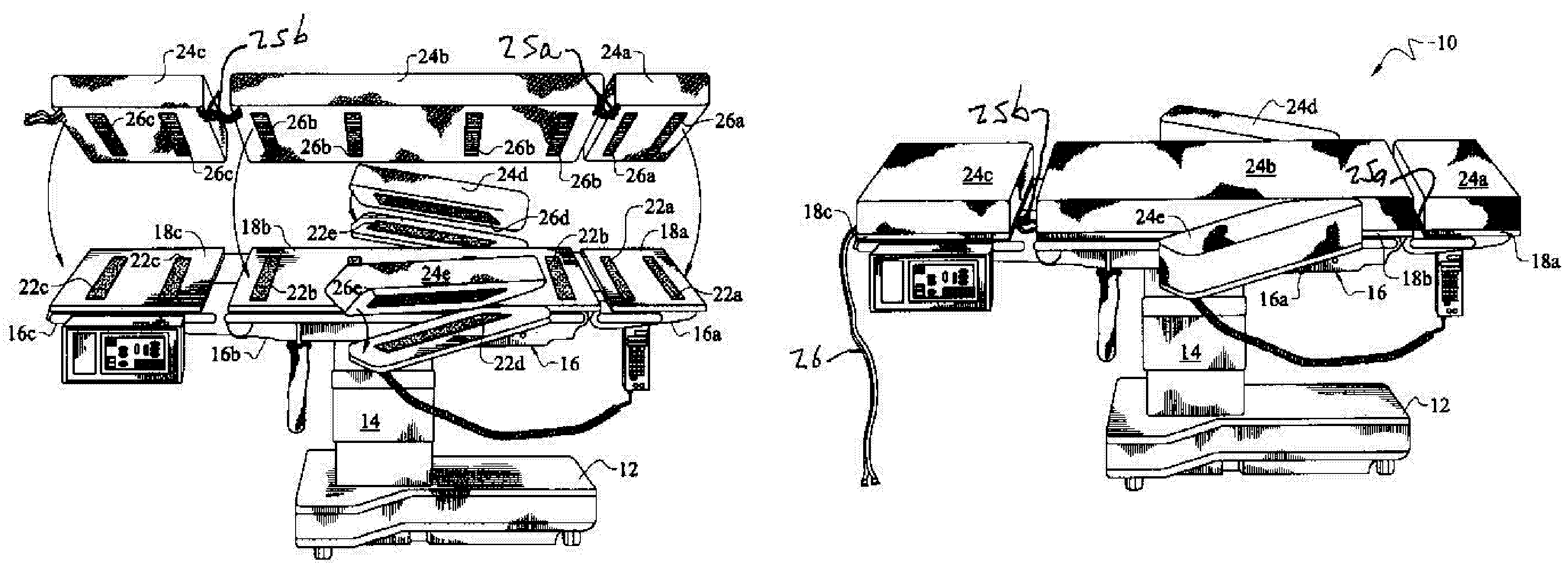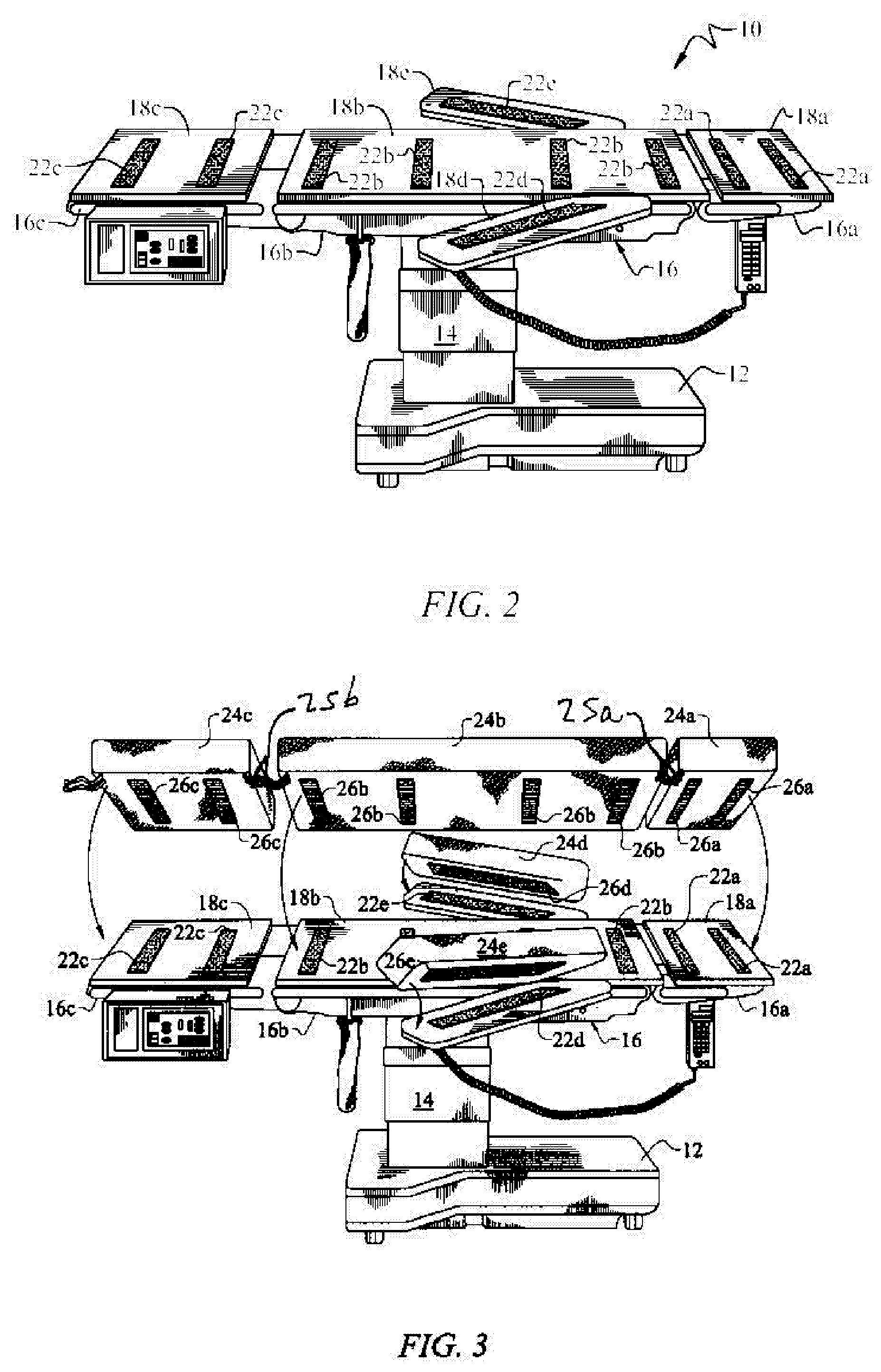Surgical table having low pressure anti decubitus ulcer surface
a surgical table and ulcer technology, applied in the field of support surfaces, can solve the problems of reducing peripheral circulation, further adversely affecting the patient's circulation, and lowering the metabolic rate of soft tissue, so as to prevent the formation of pressure sores and not adversely affecting the radiolucent properties of the surgical table
- Summary
- Abstract
- Description
- Claims
- Application Information
AI Technical Summary
Benefits of technology
Problems solved by technology
Method used
Image
Examples
Embodiment Construction
[0035]Referring now to FIGS. 1 and 2, it will there be seen that a prior art surgical table is denoted as a whole by the reference numeral 10. Surgical table 10 includes base 12, pedestal 14, and articulated frame 16 that includes head frame section 16a, trunk frame section 16b, and foot frame section 16c. These frame sections are hingedly connected to one another in a well-known way so that the patient may be positioned in differing positions.
[0036]Frame cushions or pads 18a, 18b, and 18c overlie frame sections 16a, 16b, and 16c, respectively. Left and right arm pads 18d, 18e are cantilevered with respect to frame section 16b and overlie left arm frame section 16d and right arm frame section 16e, respectively.
[0037]Support pads 20a, 20b, 20c, 20d, and 20e overlie frame pads 18a, 18b, 18c, 18d, and 18e, respectively. As depicted in FIG. 2, hook and loop fasteners 22a, 22b, 22c, 22d, and 22e are respectively secured to the exposed top surfaces of each of said frame pads. Fasteners 22...
PUM
 Login to View More
Login to View More Abstract
Description
Claims
Application Information
 Login to View More
Login to View More - R&D
- Intellectual Property
- Life Sciences
- Materials
- Tech Scout
- Unparalleled Data Quality
- Higher Quality Content
- 60% Fewer Hallucinations
Browse by: Latest US Patents, China's latest patents, Technical Efficacy Thesaurus, Application Domain, Technology Topic, Popular Technical Reports.
© 2025 PatSnap. All rights reserved.Legal|Privacy policy|Modern Slavery Act Transparency Statement|Sitemap|About US| Contact US: help@patsnap.com



